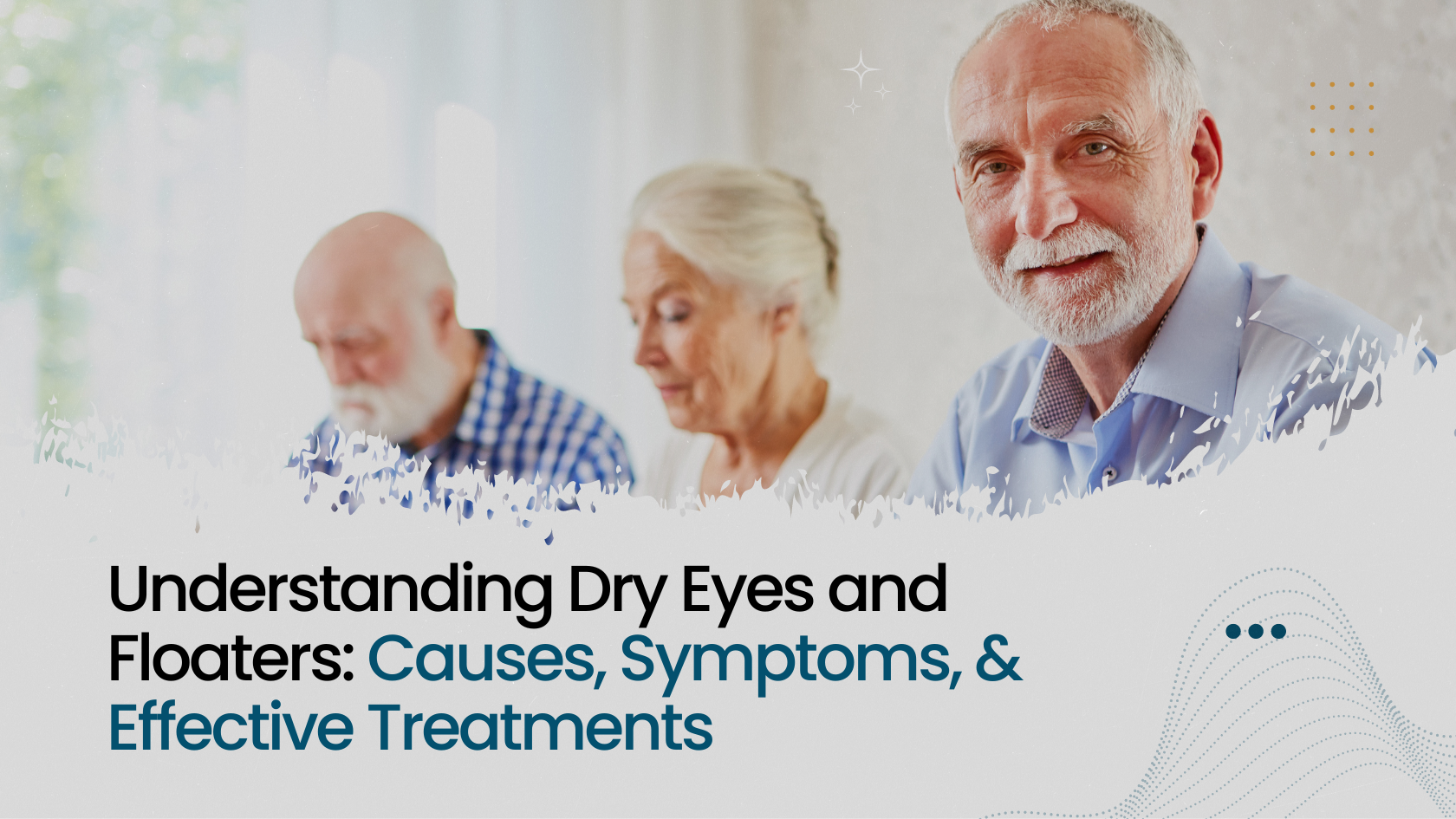Introduction: Dry eyes and floaters are common eye conditions that can affect individuals of all ages, often leading to discomfort and impaired vision. While these issues are generally not indicative of serious health problems, understanding their causes and treatments is crucial for maintaining eye health and comfort. This article explores the intricacies of dry eyes and floaters, offering insights into their symptoms, underlying causes, and the most effective treatments available today.
1: What Are Dry Eyes?
- Definition and explanation of dry eyes
- Common symptoms (itchiness, blurry vision, redness, a gritty feeling)
- Statistics on prevalence
2: What Are Floaters?
- Definition and visual explanation of floaters
- Why they occur: the science behind the floating spots
- Differentiating between ‘normal’ floaters and signs of a more serious condition
3: Dry Eyes and Floaters Causes and Risk Factors
- In-depth analysis of what causes dry eyes and floaters
- Risk factors including age, lifestyle choices, and environmental conditions
- Connection between dry eyes and floaters
4: Impact on Quality of Life
- How dry eyes and floaters affect daily activities
- The psychological impact of chronic eye conditions
- Patient anecdotes or case studies
5: Diagnosis and Testing
- How professionals diagnose dry eyes and floaters
- Description of common tests and examinations
- Importance of regular eye check-ups
6: Treatment Options
- Comprehensive overview of treatments for dry eyes (including lifestyle changes, over-the-counter options, and prescription medications)
- Treatment strategies for managing floaters
- When surgery is necessary and what it involves
7: Prevention Tips
- Daily habits to prevent the onset or worsening of dry eyes and floaters
- Nutritional advice and supplements that support eye health
- Protective measures against environmental factors
8: When to See a Doctor
- Symptoms that warrant professional medical advice
- Benefits of early intervention
- What to expect during a professional consultation

